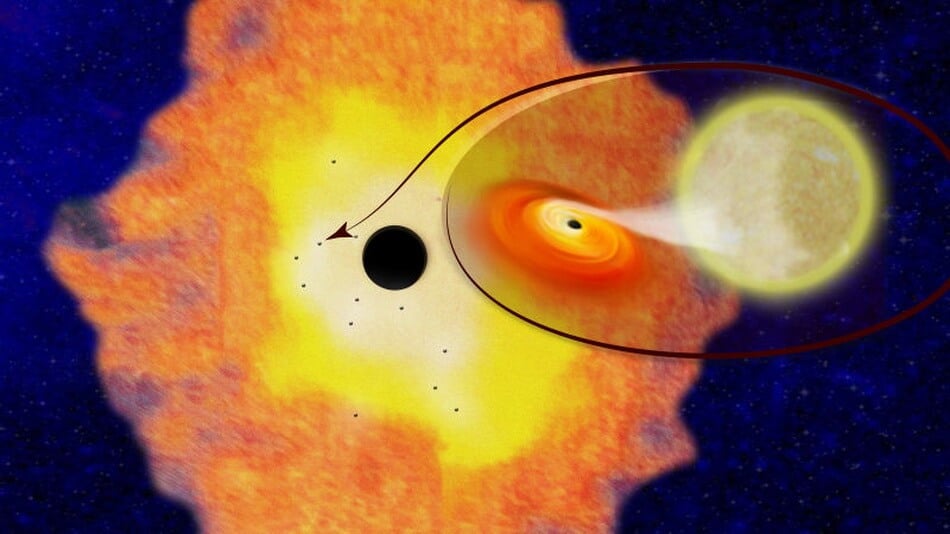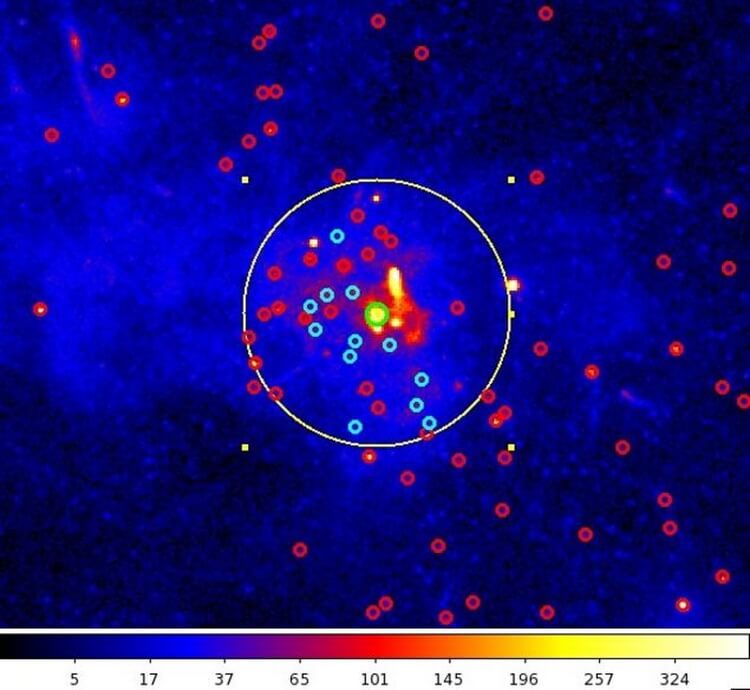
Astronomers at Columbia University in new York found a whole galaxy of several thousand ordinary black holes around the supermassive black hole Sagittarius a*, located in the center of our galaxy. Scientists say that observation of these objects will help to test the theory of relativity. About their work the researchers have shared in article of the journal Nature.
“In all other parts of the galaxy we managed to open only five hundred black holes. The theory suggests that in a small region in the center of the milky Way, whose length, width and height are only six light-years, at least 10 thousand such objects. Only now we have the first evidence in favor of this assumption,” commented Chuck Hailey of Columbia University in new York.
As and presumably in all other galaxies, our milky Way is very big black hole. In our case it is called Sagittarius a*, by mass approximately 4 million times heavier than our Sun and located 26 thousand light years from Earth.
Scientists say that around Sagittarius A* contains a few dozen stars, as well as several large gas clouds rotating around it at very high speed. When these objects approach the black hole too close, its gravity literally begins to tear them apart, which is accompanied by very bright emission of radiation.
However, other black holes, which are located near the Sagittarius A*, expect a different fate, said Haley. In their case, a supermassive black hole attracts them constantly until they end up with it not blending. However, no flares in the optical range do not occur, and all the signs of this merger, we can observe the bursts are invisible to us gravitational waves. For this reason, scientists could not figure out the existence of black holes in the center of our galaxy, respectively, to validate the predictions of the quantity theory describing the evolution of galaxies.
The American team of astrophysicists managed to get the first proof that these black holes do exist. Not only to prove their existence, but also to count their number. Scientists have suggested that some of these black holes will rotate around the center of the milky Way is not alone, and paired with an ordinary star, a pulsar or some other visible object.
If there is a pair of black holes, as a rule, are dominant and are gradually beginning to steal matter from the less dense and larger stars. If the amount of pulling gas and dust from a star becomes too large, then the black hole simply does not have time to suck all matter, resulting in its surroundings, a kind of “donut” of hot gas and dust, inside which arise from time to time flash x-rays.
Astrophysicists explain that these beams of light have a relatively low brightness compared to other stellar disasters, however, occur much more frequently and have a peculiar spectrum. This allows to distinguish them from other objects in the center of our galaxy.
As a field for research team Haley used images of the surroundings of the black hole Sagittarius a*, obtained using x-ray space Observatory “Chandra” in the last ten years. For them, the scientists tried to find the above pairs of black holes and the usual stellar objects.
As a result, researchers have discovered 12 such pairs, located on a small (in cosmic terms, of course) distance from the main black hole of our galaxy. According to astrophysicists, half of these pairs may consist of black holes and pulsars. At the same time, their location and properties indicate that around Sagittarius A* revolves around five hundred such pairs and about 10 thousand of single black holes.

Central black hole of the milky Way (marked green circle) surrounded by many x-ray sources (marked by blue and red circles), which is a pair of black holes and stars
“We were able to confirm one of the key astronomical theories and significantly advance verification many other ideas. For example, this discovery will help us to more effectively observe gravitational waves, as we now have the ability to accurately assess how many mergers of black holes can occur in the milky Way. It turns out that all we need can be found in the center of our Galaxy,” added Haley.
Astronomers have found several thousand black holes in the center of the milky Way
Nikolai Khizhnyak